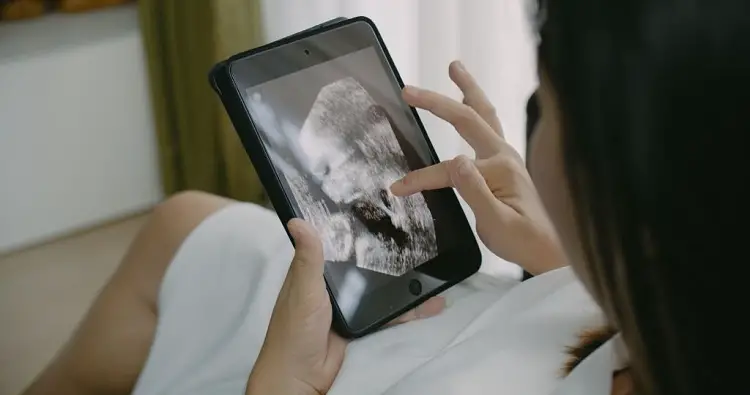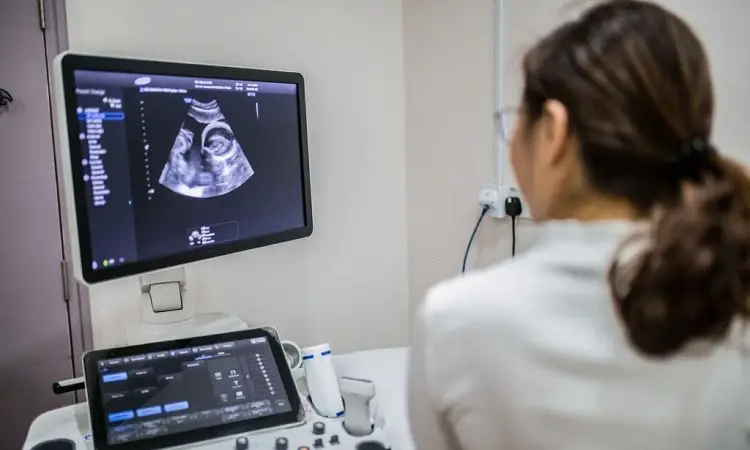Expecting a baby can bring so many emotions. You’re simultaneously excited and curious, and sometimes you may even fantasize about how they’d look, what color of eyes they’d have, and what volume of hair and skin complexion.
This is why aside from monitoring the fetus’s development, you try to satisfy your curiosity.
Some parents ask how to tell if baby has hair on 3d ultrasound to get a clearer picture of their baby in their minds.
How To Tell If Baby Has Hair On 3d Ultrasound

It is understandable why any parent would want to know if a baby has hair on 3d ultrasound.
If you’re not yet a parent, you may not be able to relate to the excitement that accompanies pregnancy.
Going through the emotional journey from the first month of conception to when the baby is born brings many physical and mental changes.
And sometimes, you can’t explain the emotions, but one thing for sure is that you’re excited to meet your little one. You want to know what it would look like if it took after the mother, father, or grandparents.
You wonder what traits they’d pick from you and if they’d have a physical semblance to what you imagine.
Asking to know how to tell if a baby has hair on ultrasound is just one out of the many questions that run through the mind of expectant parents. And this is what that curiosity is, what this article is here to satisfy.
To better understand the possibility of seeing hair through a 3d ultrasound, let us consider the different types of ultrasounds used to monitor a baby’s development.
There are three types of ultrasounds used to detect the baby’s image. There’s 2D, 3D, and 4D ultrasounds.
2D Ultrasound
The 2D ultrasound uses reflected sound waves to give a black-and-white image of a baby.
It emits sound waves that collide with structures and bounce back as reflected waves, which creates the image of the baby.
Usually, this is considered the standard ultrasound for imaging, but with technological advancement, modifications have been made in the 3D and 4D ultrasounds, which aren’t present in the 2D.
However, the 2D ultrasound is the only ultrasound capable of giving a hint of hair on a baby’s head.
Since the image is in black and white, the hair appears like a fuzz on the head of the baby, and while it may not be noticeable to a layperson, trained professionals can point it out.
3D Ultrasound
This powerful ultrasound gives a more realistic image of a baby. It uses sound waves with pictures taken at different angles to create a 3D view.
They’re known to give a more transparent and realistic image of a baby, but they do not show any appearance of hair.
4D Ultrasound
Unlike 2D and 3D ultrasounds that use sound waves to create images,4D ultrasounds can produce a live video of a baby.
You can see your baby move or smile in the tummy, which is exciting for many parents. But as precise as it appears, 4D ultrasounds do not indicate hair on a baby’s head.
Seeing the live clip of your unborn baby seems like a satisfying experience, and many parents would opt for it if they could afford it.
Although, medical professionals do not encourage it because they consider it unnecessary.
While the HDLive 3D ultrasound and 4D ultrasound technologies do not display “stands” of hair, the renderings may indicate that the baby has hair since contours on the baby indicate hair.
According to medical experts, the best method for determining if the baby has hair is a traditional 2D ultrasound (black and white), which displays “fuzz,” an indicator that hair is present.
This method is affordable and more likely to satisfy your curiosity about how to tell if a baby has hair on 3D ultrasound.
Related Article: How To Know The Sex Of A Baby Without Scan
Factors That Determine Whether A Baby Will Have Hair
Predicting your baby’s look can be difficult and sometimes inaccurate because no one baby is born the same. But some factors can bring you close to the answers you seek.
The significant factors that determine whether a baby will have hair or not are genetics and hormones.
A baby born into a family with lots of hair will likely have lots of hair, but sometimes, it turns out to be the other way around.
Therefore, knowing exactly what determines whether a baby has hair from conception is a far-fetched thought.
Hormones are also responsible for fetal development. Certain foods that can boost the hormones responsible for hair follicles during pregnancy increase the chances of hair growth in babies.
When Do Babies Start Growing Hair?
The 14th week of pregnancy is when hair follicles develop. Whatever the number of follicles produced during this period is what the baby will live with throughout their lives.
The hair begins to push through the scalp to form the hair pattern by the 15th week. The hair formed during this period is called Lanugo, which is temporary.
Vellus is the hair a baby is born with, usually formed in the last weeks of the third trimester.
It is smooth and fine and is mostly what can be seen through the 2D ultrasound. And as gestation continues, it sheds off up to three times.
Some parents mistake lack of hair in ultrasound images and the first few months of a child’s birth as baldness.
This is not true. Seeing hair strands on ultrasound pictures does not directly translate to birthing a hairy baby, so not seeing hair doesn’t mean baldness.
In some cases, like a pre-term, the hair the baby is born with is usually the Lanugo which will shed off in a few weeks to form new hair strands; only after then can you tell if your baby has a lot of hair or not.
Related Article: Vibrating Feeling in the Stomach While Pregnant
Conclusion
Technological advancement in most of our machines comes with further updates, which, in most cases, override the previous version.
But when it comes to knowing how to tell if baby has hair on 3D ultrasound, that is not the case; as explained in the article that 3D ultrasounds do not capture hair strands in their images.
They produce a more realistic image of a baby but do not capture hair strands, and it is in this regard, technically, advancement in this ultrasound did not mean the 2D ultrasound is lesser.
